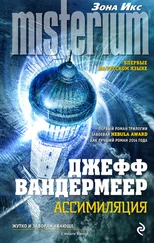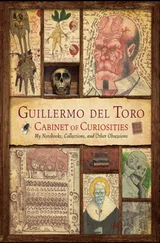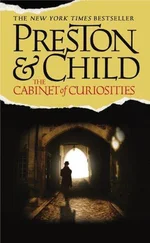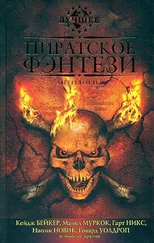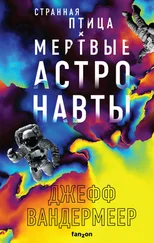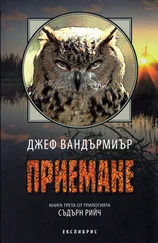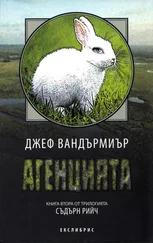Джефф Вандермеер - The Thackery T. Lambshead Cabinet of Curiosities
Здесь есть возможность читать онлайн «Джефф Вандермеер - The Thackery T. Lambshead Cabinet of Curiosities» весь текст электронной книги совершенно бесплатно (целиком полную версию без сокращений). В некоторых случаях можно слушать аудио, скачать через торрент в формате fb2 и присутствует краткое содержание. Жанр: Фэнтези, на английском языке. Описание произведения, (предисловие) а так же отзывы посетителей доступны на портале библиотеки ЛибКат.
- Название:The Thackery T. Lambshead Cabinet of Curiosities
- Автор:
- Жанр:
- Год:неизвестен
- ISBN:нет данных
- Рейтинг книги:5 / 5. Голосов: 1
-
Избранное:Добавить в избранное
- Отзывы:
-
Ваша оценка:
- 100
- 1
- 2
- 3
- 4
- 5
The Thackery T. Lambshead Cabinet of Curiosities: краткое содержание, описание и аннотация
Предлагаем к чтению аннотацию, описание, краткое содержание или предисловие (зависит от того, что написал сам автор книги «The Thackery T. Lambshead Cabinet of Curiosities»). Если вы не нашли необходимую информацию о книге — напишите в комментариях, мы постараемся отыскать её.
The Thackery T. Lambshead Cabinet of Curiosities — читать онлайн бесплатно полную книгу (весь текст) целиком
Ниже представлен текст книги, разбитый по страницам. Система сохранения места последней прочитанной страницы, позволяет с удобством читать онлайн бесплатно книгу «The Thackery T. Lambshead Cabinet of Curiosities», без необходимости каждый раз заново искать на чём Вы остановились. Поставьте закладку, и сможете в любой момент перейти на страницу, на которой закончили чтение.
Интервал:
Закладка:
Mellified Alien—The enlarged head and oversized eyes of this diminutive, mummified humanoid creature would indicate that it is of the Grey type of extraterrestrial. That it has been preserved in honey is clear. What is less clear is if it feasted upon, willingly or unwillingly, “the golden stuff,” before it died. For only if it had ingested honey in sufficient quantities over a number of days would its remains be truly mellified and impart their healing properties to whoever had been nibbling on it. The application of forensic dentistry may confirm the conjecture that this sweet confection once belonged to Sir Arthur Conan Doyle before coming into Dr. Lambshead’s possession. (Julie Andrews)
Mooney & Finch Somnotrope—These sleep simulators (pictured on page 301) have become rare artifacts; even though they were mass-produced in the Mooney & Finch Sheffield facility, each one of them emerged as a unique object due to the pressures of the oneiric centrifuge. However, they were only sold for three months, prior to the first reports of somnambulance addiction and peripatetic insomnia. The idea of experiencing four or five hours of sleep within a mere few minutes held almost unlimited allure for the world’s busiest captains of industry and harried matrons. But few were prepared for the intoxication of the Somnotrope’s soothing buzz, the sheer pleasure of watching its central piston raise and lower, gently at first and then with increasing vigor, until your mind flooded with dream fragments and impression of having sailed to the nether kingdom and back, all in a few minutes. It only took a few unfortunate deaths for the whole line to be recalled. (Charlie Jane Anders)
Mother of Spirits—Drab olive in color, with copper flecking, this three-inch-long sessile organism resembles a desiccated asparagus spear mated with a tiny artichoke. Once rehydrated in a suitable measure of clean water, it manifests a most peculiar phenomenon. When placed into a vessel containing fermented alcoholic beverage—beer, wine, mead, etc.—the Mother of Spirits catalyzes a secondary fermentation up to 120 proof (provided sufficient sugars are available). The Mother extrudes rootlike growth during this process, which can last several months, and it is speculated these function in a symbiotic relationship with residual yeasts to effect the unusually high secondary fermentation. Daughters form at the root nodes once alcohol content surpasses 50 percent, as the Mother is spent during the process. The resulting liquor is of fine quality, but a distinct aroma and flavor of cilantro renders it unpalatable to some. (Jayme Lynne Blaschke)

Ron Pippin’s optimistic vision of the Much Smaller Cabinet’s contents.
Much Smaller Cabinet—This miniature cabinet is a duplicate of Dr. Lambshead’s in nearly every respect, a 1/1000th-scale model incorporating scorch marks and splintered frame down to the smallest detail. A single variation: the door remains locked. The doctor dropped the diminutive key in his squid tank and failed to retrieve it before Longfellow’s greedy tentacles snatched it from view. Peering through the keyhole—itself no wider than the head of a pin, with no room to spare for dancing angels or other divine revelers—one can glimpse a mere hint of the curios stored inside. Perhaps someday a scholar of all things underestimated will write a short story seeking to describe and comprehend the dwarf contents. (Paul Kirsch)

The Steampunk Workshop/Jake von Slatt re-build of a Mooney & Finch Somnotrope
Night Quilt, American—A notable example of a hand-stitched night quilt featuring unusual subject matter: smallpox, penury, and death by hanging. The thread and dye indicate the quilt originated in the small farming communities of east-central Wisconsin around 1850.
The quilt was purchased during the 1902 decommissioning of Lake Covenant Church near Oostburg, Wisconsin. “Absolutely no return” is handwritten on the receipt. Two newspaper articles are attached to the receipt. The first, from the July 19, 1871, Plymouth Herald, reports on the acquittal of Samuel Ronde in his trial for the brutal murder of the Denne family in Oostburg and his unlikely escape from mob justice following his release. The second article is from the November 13, 1871, issue of the Sheboygan Courier . In reporting the great Peshtigo fire the previous month, the article reports that one S. Ronde, lately of Oostburg, is among those missing since the conflagration.
All three of the quilt’s existing panels show exquisite and extensive detailing and remain in remarkable condition. Based on cut work, threading, and style, each of the panels was created by a different family member. The quilt’s blue border is worked with alternating white stars and black circles, probably by the creator of the third panel.
In clockwise order, the appliqué panels show: first, a naked boy, covered in small sores, asleep atop a rough pine bed. The bed covering in the panel is worked with miniature red versions of the stars and circles that line the quilt’s borders.
Second, a blond man at night, his felt pockets turned inside-out, standing in a fallow field. He appears to be holding a jug. A plow with empty traces is visible in the background. There is a waning quarter-moon visible in the night sky, but no stars.
Third, the same blond man from panel two, hanging from a leafless tree. On the right side of this panel, three women (wearing matching red bonnets) weep vibrant cloth tears. On the left side of the panel, a stout preacher wearing a black felt hat watches. What appears to be a sliver of moon is visible through the tree branches. Again, there are no stars.
The fourth panel is missing. (Tom Underberg)
Oneyroscope—A device designed by French inventor Louis Lumière after the invention of the cinematograph. His purpose was to record dream experiences, showing them on a screen, like motion pictures. Lumière’s brother, Auguste, was the first subject of the experiment, and there is a silent movie directed by George Méliès registering the entire process. In the film, August Lumière is lying on his bed wearing a steel helmet on his head, connected by a bunch of wires to a strange machine operated by his own brother. Behind them, a silver screen is showing us what he’s dreaming: a flock of clay pigeons flying underwater. On April 15, 1900, the first public demonstration of a prototype Oneyroscope was given at the Exposition Universelle held in Paris, France, becoming a huge success. At the time, Sigmund Freud, the father of the psychoanalysis, reportedly said that the Oneyroscope could be “the most revolutionary discovery in history.” (Ignacio Sanz)
“Our Greatest President,” Reel 3—A single reel of film with a yellowing, typewritten label that reads OUR GREATEST PRESIDENT—1939—REEL 3 OF 5. Notable for its size (38 millimeter instead of the standard 35 millimeter), the aging film is of interest for two other reasons. First, the movie features performances by Sarah Bernhardt, Marilyn Monroe, and someone who bears a striking resemblance to Steve Guttenberg. Second, and most intriguing, the plot of the movie seems to revolve around America’s seventh president: a man called Ronald Smith Washington, purportedly the son of George Washington. The third reel tracks his last term in office and his struggle against the Japanese in the War of 1812. Despite the strange nature of the film’s content, preliminary lab results have indicated the reel itself is consistent with other prints from the late 1930s. The other four reels have yet to surface. (Tucker Cummings)
Читать дальшеИнтервал:
Закладка:
Похожие книги на «The Thackery T. Lambshead Cabinet of Curiosities»
Представляем Вашему вниманию похожие книги на «The Thackery T. Lambshead Cabinet of Curiosities» списком для выбора. Мы отобрали схожую по названию и смыслу литературу в надежде предоставить читателям больше вариантов отыскать новые, интересные, ещё непрочитанные произведения.
Обсуждение, отзывы о книге «The Thackery T. Lambshead Cabinet of Curiosities» и просто собственные мнения читателей. Оставьте ваши комментарии, напишите, что Вы думаете о произведении, его смысле или главных героях. Укажите что конкретно понравилось, а что нет, и почему Вы так считаете.

